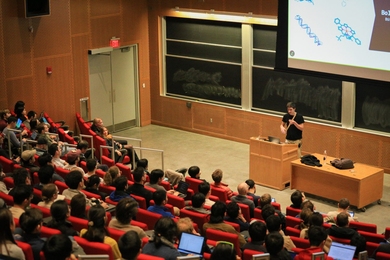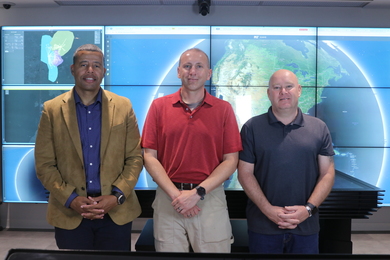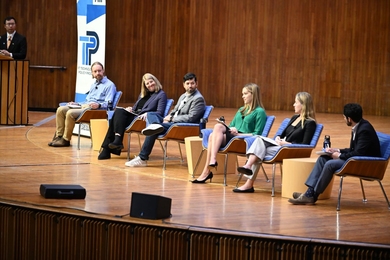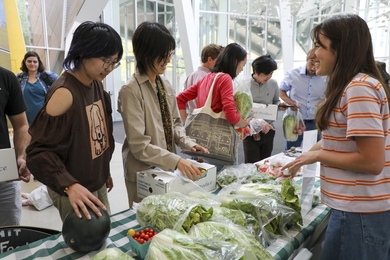The 60 students who packed a conference room at the Plasma Fusion Center last week were a little more vocal than the usual lecture attendees-they were first-graders from Boston's Joseph J. Hurley School delighting in the science lessons being imparted by technical supervisor Paul Thomas, a.k.a. "Mr. Magnet."
Mr. Thomas takes his act on the road about once a month, demonstrating various principles of electricity and magnetism at elementary schools. Students visit him at MIT twice a year, but this was the first time that a group so young had come here to see him. "It has a real attraction-pardon the pun-for little kids," he said.
The building's usually quiet atmosphere was interrupted by children's excited squeals as they saw "lightning" crackle from a Van de Graaff generator and fistfuls of Rice Krispies fly from a metal pie plate atop "The Boomer," a device Mr. Thomas uses to demonstrate an impulse magnetic field. He adapted the machine from sonar equipment developed years ago by the late Professor Harold (Doc) Edgerton.
"Mr. Magnet" is part of the Plasma Fusion Center's outreach program and MIT's Council on Primary and Secondary Education, whose goal is to get children interested in science early on. "I want to show you that science is a lot of fun. That's the name of the game," Mr. Thomas told his young audience.
"We're trying to get the students to think like scientists and work in teams like scientists," said Dr. Virginia Zanger, director of the Hurley School's two-year-old Hands-On Science Project.
In addition to Mr. Magnet, Hurley students have visited four other MIT scientists: Anita Flynn and Lukas Ruecker, graduate students in electrical engineering and computer science, Richard Perdichizzi, a technical instructor in aeronautics and astronautics, and Professor Rainer Weiss of physics. The third-grade children, who had been studying the scientific process, were able to tour labs and see actual experiments being carried out, Dr. Zanger said.
"We're very encouraged that the kids get to see the connection between what they do in the classroom and what grown-ups do," she said. "We're thrilled with the generosity that MIT people have shown us in encouraging young scientists of the future. MIT is a wonderful resource."
The first-graders were pretty thrilled as well, if their scrambling for vantage points and selection as demonstration volunteers was any indication. "They're so excited," Dr. Zanger said. "Kid are begging their parents to buy them magnets."
A version of this article appeared in the May 4, 1994 issue of MIT Tech Talk (Volume 38, Number 34).





